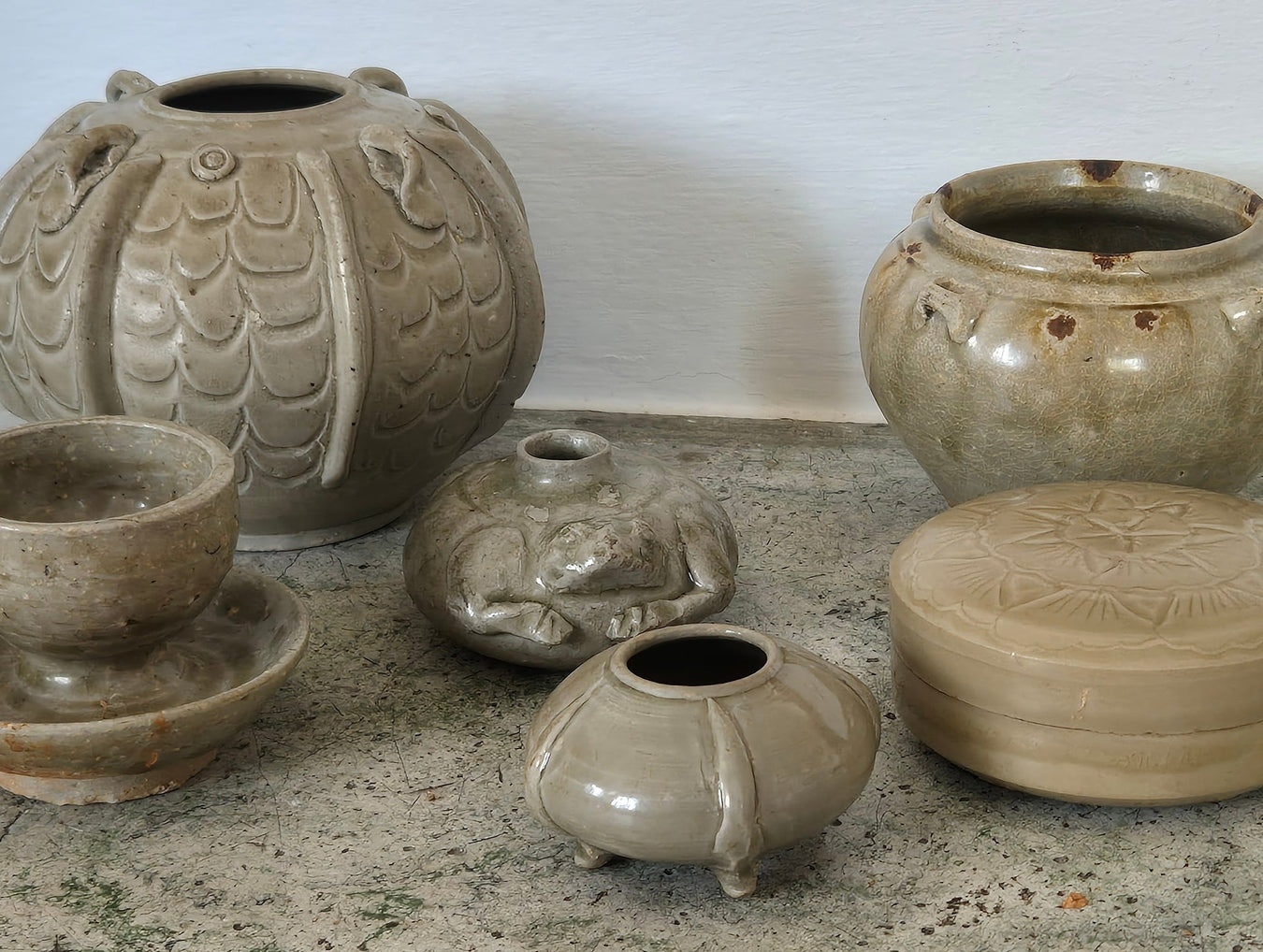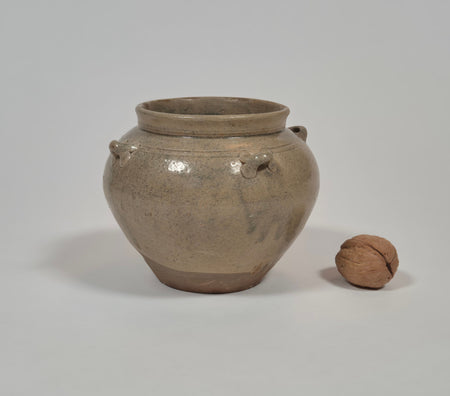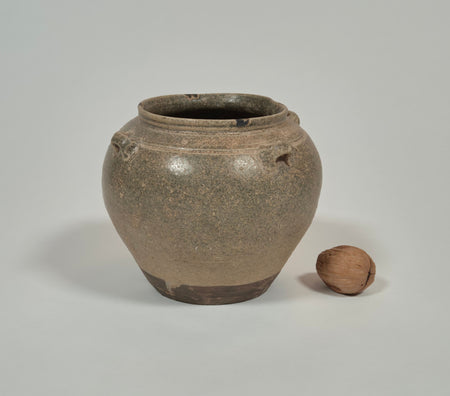Yue ware

Zhejiang is regarded as the birthplace of greenware porcelain and a major area of ceramic production for over 3,000 years. Ceramic manufacturing in the region began during the Shang dynasty with proto-porcelain, and continued through the Qing dynasty, when the Longquan kiln ceased operation. Over time, renowned kilns such as Yue, Longquan, and Southern Song Guan emerged, with Yue and Longquan kilns standing out due to their scale and cultural influence.
Since the 1950s, archaeological research has uncovered over 2,000 kiln sites across Zhejiang, significantly enriching our understanding of historic ceramic production. Finds from kiln remains, burials, and hoards have provided insight into the development of ceramic production in the area. Proto-porcelain, first produced in the Shang/Zhou and Spring and Autumn/Warring States periods, experienced renewed production after the mid-Eastern Han period. Scientific analysis of Eastern Han kiln sites at Zhixiangshan and Xiaoxiantan in Shangyao confirms this transformation (from more pottery-like ware of the Western Han period), with vessel shapes such as zhong containers, washers, tiger pots, and five-linked jars reflecting a continuous evolution from proto-porcelain to high-fired stone ware. The primary kiln center at this time was in the middle and lower valleys of the Cao’e River in Shangyu, with additional sites in Ningbo, Wenzhou, Quzhou, and Jinhua.
During the Six Dynasties period, Zhejiang’s ceramic industry thrived. This period is often divided into three phases: Three Kingdoms–early Eastern Jin, middle–late Eastern Jin, and the Southern Dynasties. The earliest phase was the most prosperous, producing sculptural Hunping (spirit vases), ram- and lion-shaped vessels, frog-shaped water containers, chicken head ewers, and elaborate mingqi (spirit objects) such as pig- and dog enclosures. Daily-use vessels included bowls, jars, and vases, often decorated with geometric pearl motifs or fine diamond patterns. Shangyu remained the center of production, while kilns in Wenzhou, Ningbo, and Jinhua developed distinct local styles. Wenzhou wares, for instance, were lighter in glaze color due to a clay composition lower in iron oxides. Kilns in the Wenzhou area are often referred to as Ou kilns. By the middle–late Eastern Jin, decorative motifs diminished and the Hunping disappeared, and simpler forms with brown underglaze spots became common. In the Southern Dynasties, greenware production gradually declined, and while lotus motifs persisted, glazes became thinner and more fragile.
During the Tang and Five Dynasties periods, ceramic production shifted from Shangyu’s Cao’e River valley to Shanglinhu in Cixi. Early Tang ceramics were relatively crude, characterized by flat-bottomed bowls with partial glaze coverage and minimal decoration. However, the middle and late Tang saw a revival with the Yue kiln’s renowned "Mi-se" (mystery colour) ware, distinguished by their luminous greenish-yellow glaze and refined material quality. Historical records indicate that Zhejiang began producing tributary ware during this time, with elegant vessel shapes such as jade bi-disk-based bowls, lobed cups, and intricately incised lotus designs. During the Five Dynasties, greenware production continued to evolve, with thin-walled, finely balanced vessels in various forms, including cupstands, powder boxes, and square-stacked containers. Yue wares from this period are notable for their smooth, glassy glazes, while other kiln sites in Taizhou, Wenzhou, and Jinhua produced similar styles with subtle regional differences.
In the Northern Song, the dominance of Yue and Ou kilns began to decline as new porcelain centers emerged, particularly Longquan. The early Northern Song represented the peak of Yue ware production, with highly refined and dynamic designs featuring birds, flowers, dragons, and phoenixes. Kiln complexes expanded significantly, with major production centers at Shanglinhu in Cixi, Shabu in Huangyan, Xushu in Taizhou, and along the Cao’e River. By the mid-Northern Song, Yue kilns declined, with glaze colors shifting to greenish-yellow and greenish-gray, and intricate incised decorations giving way to simpler floral motifs. By the late Northern Song, Yue ware had become coarse and faded, with only the Yindinghu kiln in Cixi still active during the Southern Song. The Ou and Wuzhou kilns followed a similar pattern, producing quality wares that, while artistically significant, did not match the prestige of Yue porcelain.

